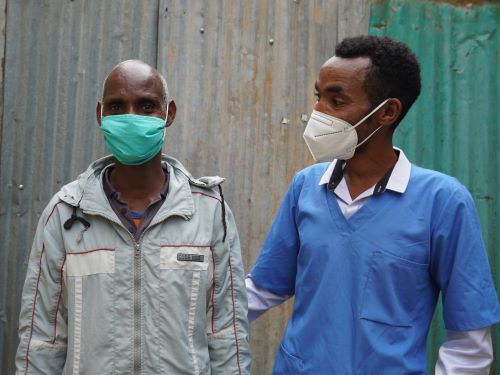Knowledge, Attitudes, and Practices Related to TB among the General Population of Ethiopia: Findings from a National Cross-Sectional Survey
Knowledge, Attitudes, and Practices Related to TB among the General Population of Ethiopia: Findings from a National Cross-Sectional Survey
Abstract
Introduction
Ethiopia is among the high-burden countries for tuberculosis (TB), TB/HIV, and drug-resistant TB. The aim of this nationwide study was to better understand TB-related knowledge, attitudes, and practices (KAPs) and generate evidence for policy and decision-making.
Materials and methods
We conducted a cross-sectional TB KAP survey in seven regions and two city administrations of Ethiopia. Eighty kebeles (wards) and 40 health centers were randomly selected for the study. Using systematic sampling, 22 households and 11 TB patients were enrolled from each selected village and health center, respectively. Variables with a value of p = < 0.25 were included in the model for logistic regression analysis.
Results
Of 3,503 participants, 884 (24.4%), 836 (24.1%), and 1,783 (51.5%) were TB patients, families of TB patients, and the general population, respectively. The mean age was 34.3 years, and 50% were women. Forty-six percent were heads of households, 32.1% were illiterate, 20.3% were farmers, and 19.8% were from the lowest quintile. The majority (95.5%) had heard about TB, but only 25.8% knew that TB is caused by bacteria. Cough or sneezing was reported as the commonest means of TB transmission. The majority (85.3%) knew that TB could be cured. Men, better-educated people, and TB patients and their families have higher knowledge scores. Of 2,483 participants, 96% reported that they would go to public health facilities if they developed TB symptoms.
Discussion
Most Ethiopians have a high level of awareness about TB and seek care in public health facilities, and communities are generally supportive. Inadequate knowledge about TB transmission, limited engagement of community health workers, and low preference for using community health workers were the key challenges.
Conclusions
Given misconceptions about TB’s causes, low preference for use of community health workers, and inadequate engagement, targeted health education interventions are required to improve TB services.
